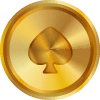ルーレット戦略?うーん... 2 年近く前にギャンブルを始めたとき、私はフィボナッチ数列を好んでいました。ダブル ストリート ベットなどはとても楽しかったのですが... 結局、資金やテーブル制限に行き着いてしまいます。
今日の話に戻りますが、私が開発している賭けモデルを公に説明したり詳細を説明したりしたいかどうかはわかりませんが、次のように述べます。
) ほとんどの人は、前のスピン/ハンドで起こったことが次のスピン/ハンドに影響を与えないことを知っています...それでも、前のハンドの勝ち負けに基づいた賭けシステム (プログレッシブなど) を開発しています。私は、平均がもう少し発揮されるようにするグループ/セットに基づいたシステムを開発しています。これは、ルーレット テーブルに座ったときに、少なくとも 40 回のスピンを探すということになります。
) ほとんどの人はハウスエッジのパーセンテージに細心の注意を払っていますが、私はそれを超えて、標準偏差/分散/ボラティリティに注目するようになりました。たとえば、スリーカードポーカーのハウスエッジはブラックジャックよりも高く、およそ 3.6% のアンティと 2.0% のプレイから 0.5% ですが、分散の変化は 1.6% から 1.2% にすぎません。アメリカンルーレットのハウスエッジは 5.3% ですが、分散は低く抑えることができます (分散はルーレットテーブルでの賭けの種類によって異なりますが、アウトサイドベットは妥当な分散があり、プレイできます)。
Roulette Strategy? Hmmm ... when I started with gambling almost two years ago, I was favoring the Fibonacci sequence - it was a lot of fun on things like double street bets ... but eventually you run into bankroll or table limits.
Jumping to today ... I am not sure I want to describe / detail the betting models I am developing publicly ... but I will say:
) most people know that what happens in a previous spin / hand does not impact the next spin / hand ... and yet they develop betting systems (like progressives) that are based on winning or losing the previous hand. I am developing a system based on groups / sets that allows the averages to play out a little more. What this looks like is that when I sit down to a roulette table, I am going to be looking for at least 40 spins.
) most people pay close attention to the percentage of house edge ... more and more I am looking passed that and focusing on the standard deviation / variance / volatility. For example, Three Card Poker has a higher house edge than Blackjack - roughly 3.6% ante and 2.0% play to 0.5% , but the change in variance is only 1.6% to 1.2%. American Roulette has a house edge of 5.3% ... but the variance can be low (the variance changes across the type of bet on a roulette table, but the outside bets have reasonable variance and can be played).
自動翻訳:















